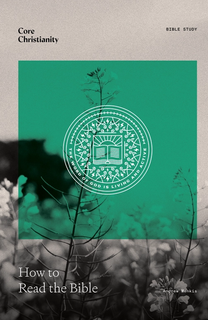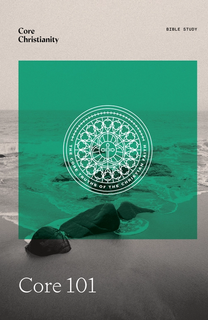The starting point for understanding any portion of the Bible is to identify the genre of literature you’re reading. The Bible has a diverse array of genres: historical narrative, poetry, wisdom literature, prophecy, letters, and apocalyptic literature. Failing to take a book’s or chapter’s genre into consideration can in some cases lead to harmful misinterpretations. Imagine, for example, reading Matthew’s account of the resurrection of Christ as if it was a highly symbolic poem, not an account of historical events. The entire meaning, significance, and reality of Christ’s resurrection depends heavily on what genre Matthew was writing!
NARRATIVE
A narrative is simply a story with characters and events that follow an arc with a clear beginning, middle, and ending. More than a third of the Bible can be classified as “narrative.” In addition to the Pentateuch and historical books, the prophetic books contain sections of narrative. In the New Testament, the Gospels and Acts are also narratives.
There are a couple of things we should keep in mind when reading narratives. First, we should not be so focused on the story itself that we lose sight of the fact that God is revealing himself and his plan of salvation through the story. Each narrative in Scripture has a message God wants to convey to the church today. Second, we should not look only for a message without focusing on the story. This mistake seeks the “moral of the story” without caring about the story itself.
Biblical writers did not recount history in the same way we do today. They were not trying to be objective, but wrote their narratives with the Spirit’s inspiration in order to make a point. In order to interpret a narrative rightly, then, we must read the story with a desire to hear what God is communicating through the story, asking questions like, “Why are certain details included? Why did the author portray this character or circumstances this way, or in this order? What theological point might he be trying to make?” We also must keep in mind how the story fits in the grand, overarching narrative of the entire Bible.
POETRY
Poetry is found throughout the Old Testament. In fact, there are just a small handful of books that don’t have any poetry in them. Poetry is distinguished from prose (which is writing that follows ordinary, everyday patterns and structures of speech) by the usage of rhythm, rhyming, and figures of speech such as symbolism, hyperbole, metaphors, and irony. Hebrew poetry in particular flaunts the “rules,” by changing word order and verb tenses in order to make the speech beautiful and draw out meaning. It also uses parallelism to highlight comparisons and make points. When interpreting poetry, it is helpful to consider the structure of the poem and its imagery.
In addition to these indicators, our English translations of the Bible lay out each line of the poem. This makes it easy to spot poetry as you flip through the Bible. Just look at the way the text is laid out in the Psalms versus the narrative prose in Genesis, and you will see the difference.
The book of Psalms is the prime example of poetry in the Bible. The Psalter (pronounced “Salter”) consists of 150 songs the Israelites would have learned and sung together as they worshiped God. These poems offer praise, lament, imprecations, and prophecies that point to the life and work of Christ.
WISDOM LITERATURE
While genres such as history and poetry are familiar to us, wisdom literature may be more foreign. Biblical wisdom literature is written to instruct us in the ways God designed and intended for us to live and flourish.
The wisdom books of the Bible can be divided into three categories: Teaching (Proverbs), Reflective (Job and Ecclesiastes), and Lyric (Song of Solomon). Teaching wisdom (also called didactic, instructional, or proverbial wisdom) consists of short and pointed directions for life. Reflective wisdom contemplates and wrestles with the gap between the way things should work and the way things actually happen. The Song of Songs (or the Song of Solomon) is an example of Lyric wisdom. In this song, the gifts of marriage and sex are celebrated by the author, as wisdom about those subjects is dispensed in poetic form. Many exegetes in both the Jewish and Christian traditions have also seen in this love poetry an expression of God’s love for his people.
PROPHECY
The prophetic books of the Bible can be a bit intimidating when you first encounter them. These books span from Isaiah to Malachi and make up a sizable portion of the Old Testament. Some are quite short books and are often referred to as the Minor Prophets. Some are quite long and are fittingly called the Major Prophets. Moreover, these books are full of vivid and frequently strange imagery and visions. Yet, despite their initial strangeness, they are full of truth and beauty. They teach us who God is, highlighting his righteousness and justice, alongside his love and mercy. There is much to be learned in the prophets, much to be challenged by, and much to be encouraged by.
When you think of prophecy, it’s common to think in terms of a prediction of future events. This is true in some cases, but too simplistic of a view of biblical prophecy. There are different types of Biblical prophecies:
Unconditional prophecies will come to pass no matter what. They don’t depend on human action or involvement for their fulfillment. This type of prophecy is certain, because it is a sure and trustworthy promise of God. Frequently, these types of prophecies are made in covenants between God and his people.
Conditional prophecies, as the name suggests, are the opposite of unconditional prophecies. This type of prophecy depends on the actions of men and women. We can typically spot conditional prophecies when a prophet makes “if” or “unless” statements about the future. These statements rest on a basic principle: that if God warns someone or a group that judgment is coming and they repent, then he will show mercy and relent.
Sequential prophecies are a bit more complex in the sense that they will have both near and far fulfillments. The short-term fulfilments validate the prophet’s words and tell the listeners that their long-term predictions are reliable and will come to pass. The better you understand the Bible’s overarching story of redemption, the easier it will be for you to identify and understand sequential prophecies.
EPISTLES
An epistle is simply a letter. It’s a personal correspondence, yet the Epistles of the Bible are more than that. The letters in the Bible are sometimes written to churches and sometimes to individuals, but they’re always intended to be read aloud publicly to the corporate body of Christ. To put it another way, while the letters of the New Testament are often personal, they are written for the church of all places and all times. Yet, though they are for the church of all times, it is true that each New Testament Epistle has its own historical context that must be taken into consideration. These letters are written to specific people and speak to situations in their lives. This means that the Epistles are not theological textbooks; they do contain much theology, but they primarily address real-life situations and people and must be understood in their context before being applied to the church today.
APOCALYPTIC
Apocalyptic literature details what will happen at the end of the age. In the Bible, Revelation and some Old Testament prophecies fall under this genre.
There’s no doubt that Revelation is one of the most intriguing yet difficult books of the Bible to interpret. The imagery, numbers, and stories all inspire the imagination. Moreover, some pretty big theological debates stem from differences in interpretation of passages from Revelation.
Apocalyptic literature contains visionary symbolism. To understand these symbols, we can’t try to force them into our own understanding of reality. We must ask instead, “To what reality is this symbol pointing?” and “What is this symbol saying about the reality to which it points?” We also must use the rest of Scripture to understand this symbolism. Many of the pictures found in Revelation are references to Old Testament prophecies and aspects of Israel’s history. Just as with the other genres, apocalyptic literature must be understood in terms of the Bible’s grand story of salvation, ultimately leading us to Jesus.
What Does the Bible Say?
- What Scripture says about itself: Deut. 4:2; Ps. 12:6; Prov. 30:5–6; Isa. 55:10–11; Jer. 23:29; John 17:17; 2 Tim. 3:16–17; Heb. 4:12; James 1:22; 2 Pet. 1:19–21
Recommended Resources
- Journeys With Jesus: Every Path in the Bible Leads Us to Christ by Dennis Johnson
- The Unfolding Word by Zach Keele










